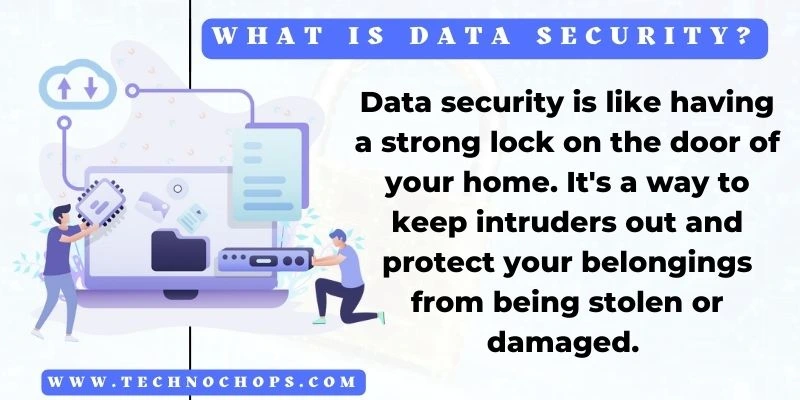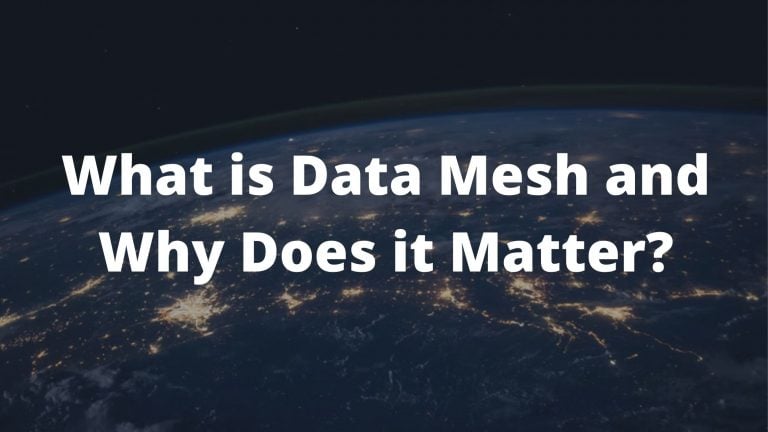Data Storage Security – Save Your Data From Vulnerabilities

From financial records to customer data, maintaining the security of your business’s sensitive information is essential. Without the right protection measures in place, nefarious actors could gain access to your network and wreak havoc, stealing corporate secrets or exposing the personal details of your employees or customers. It’s a real risk that can’t be ignored. Fortunately, there are steps you can take to safeguard your data and prevent disaster. In this article, we’ll explain the essentials of data security and show you how to use various tools and techniques to keep your valuable data safe from prying eyes.
What is Data Security?

Data security is like having a strong lock on the door of your home. It’s a way to keep intruders out and protect your belongings from being stolen or damaged. Just as a properly installed lock can help you keep your possessions safe; data security can help you safeguard valuable information from malicious attacks or those that attempt to alter it.
In the same way, some industries must adhere to certain regulations when it comes to data protection, such as those that handle payment card information or else face legal repercussions. However, data security should be a priority for all businesses regardless of size or industry, as it could mean the difference between success and failure.
For example, an online store with weak data security might be vulnerable to cyberattacks that could not only cost them their customers’ trust but also lead to financial losses from stolen credit cards and other forms of fraud.
Check What is the best GPU for machine learning?.
What main elements makeup Data Security?
The three cornerstones of data security; Confidentiality, Integrity, and Availability are known as the CIA Triad. This framework provides businesses with the essential tools to keep their valuable information safe and secure from malicious actors.
Let’s break down what each one of these core principles means when it comes to protecting data.
Check What is GTE Technology? How to invest in GTE Technology?.
Types of Data Security

1. Access Controls
Access controls are the first line of defense when it comes to protecting your business’s valuable data. They limit physical and digital access to computer systems, networks, and data by requiring login credentials or other forms of identification before allowing entry. Access control policies should incorporate regular password updates, two-factor authentication where available, and a system granting limited access only to those who need it.
2. Authentication
Authentication helps verify user identities so that they have proper access rights upon entering any system or database. Authentication typically takes the form of passwords, PIN numbers, security tokens, swipe cards, biometrics (like fingerprint or facial recognition), or other forms of multi-factor identification methods like Social Security number verification codes sent via text message for additional protection.
3. Backups & Recovery
It’s important for businesses to have backups in place so that if something happens with their system, whether it be a natural disaster or malware attack, they can still recover their critical information quickly and safely without significant disruption in operation. Backups are generally stored on separate formats such as physical disks onsite/offsite storage facilities as well as cloud solutions like Microsoft Azure Storage account.
4. Data Erasure:
Data erasure helps keep us safe by securely removing private information from storage devices so that it cannot be recovered by malicious third parties who may come across those devices later down the line (known as “data scavenging”).
Standard deletion isn’t enough; instead, you should use software designed specifically for overwriting stored info beyond recovery levels. This process is called “sanitization” or “degaussing” depending on the method used.
5. Data Resiliency
Data resiliency refers to the ability of your systems and operations to survive even in times of failure or disasters such as power outages or natural disasters like floods or hurricanes. To increase the reliability and durability of their systems against failures like these, many organizations turn towards cloud computing solutions which provide more options for disaster recovery solutions such as backups stored in multiple locations around the world with frequent synchronization between those points, so they remain ready whenever needed due to an emergency situation occurring at one location or another.
6. Encryption
Encryption involves making the information unreadable through computer algorithms by transforming similar text characters into an unscrambled form via encryption keys that correspond with each other on both ends where there’s a sender/receiver pair involved so that only authorized parties have permission unlocked when exchanging messages online.
7. Data Masking
One form of data protection is known as “data masking” which essentially obscures key information with proxy characters so that even if someone somehow gains access to it, they won’t be able to make sense out of it without authorized authentication keys.
For example, let’s say an employee needs to send another employee some banking details over email but doesn’t want anyone else in between them to see this information. In this case, they would use a data masking software tool like Mimecast which will hide the characters with proxy characters while still being visible enough for the other person receiving it to understand what is in front of them. An example of masking:
r@Nd0mT3xt!Xt-@##7#F%sT%V1ddC!&gHjK&p9T^f7dAaM8e_sVgD2kly
This way only two people have access without anyone else being able to intercept or manipulate the text before they get there.
Closing Thoughts
Data security is a marathon, not a sprint. It’s an ever-evolving and ongoing effort to ensure that your sensitive data is always safe and secure. To achieve this, you need the perfect combination of both technology and practices such as data purging and quarantine, along with data classification software to know what to protect, who from, and what to delete when needed. Don’t forget about regulatory compliance either; insufficient data security can put you in hot water with hefty fines.






